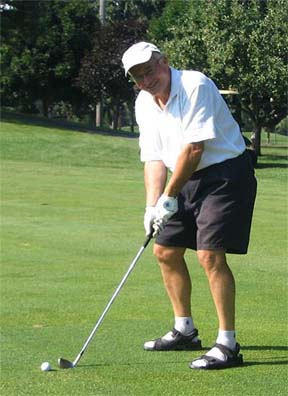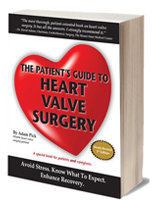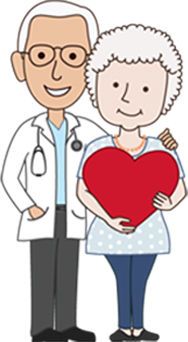Adam's Heart Valve Surgery Blog – Page 72
“What Is The Mitral Valve Annulus?” Asks Dana
Written By: Adam Pick, Patient Advocate, Author & Website Founder
Page Last Updated: June 6, 2025
Some patients want to know EVERYTHING before their operation – the valve anatomy, the surgical process, the recovery details. Other patients want to know absolutely NOTHING about their upcoming surgery. Many say to me, “Honestly Adam, I don’t want to know a thing. The more I know, the more I will worry.”
I can understand both positions. That said, this blog is for those who want to know everything – especially about the anatomy of the mitral valve. Dana just wrote to me, “Adam – Can you help me understand what the mitral valve annulus is? My sister needs mitral valve replacement surgery due to regurgitation and that term – mitral valve annulus – came up in our last discussion.”
No problem Dana. To start, please look at the two figures below. You can see a top- and side-view of the mitral valve. The posterior and anterior annulus is labeled on both diagrams.
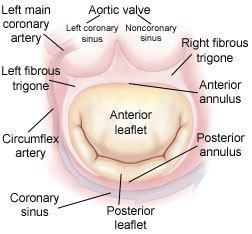
Bob’s Search For The Number One Hospital In Heart Valve Replacements
By Adam Pick on September 2, 2008
I just received an email from Bob about cardiac care centers. He writes, “Adam – Do you happen to know what is the number one hospital in heart valve replacements? I have a mitral valve prolapse and I need a mitral valve replacement. I would like to know which are the best hospitals in the United States.”
Unfortunately, I don’t know which hospital is number 1 for heart valve replacement surgery. However, I do have one reference point for Bob regarding the top ten hospitals for heart surgery. Each year, U.S. News And World Report issues a “top 10 ranking” of the best hospitals for heart surgery. While this ranking does not indicate the quantity of heart valve replacements performed each year, it does (in some sense) indicate the quality of heart surgery which I believe is most important.
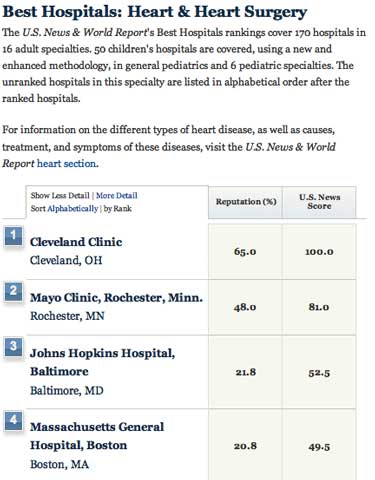
Quirky Bicuspid Aortic Valve Membrane Surgery For Melissa
By Adam Pick on September 2, 2008
Here’s an inspiring email from Melissa, a recovering patient from Sydney, Australia. With her approval, I thought you might like to read it:
Hi Adam,
I’m emailing from Australia, I’m 34 and I had my open heart surgery 4 months ago (on 14 April to be exact).
I had a quirky congenital condition that needed to be fixed – the membrane just under my aortic valve was not functioning properly. Plus, my aortic valve is bicuspid and a bit leaky. But, the major concern was the membrane. My cardiologist and surgeon – Doctor Alan Farnsworth, St Vincent’s Hospital in Sydney – decided to wait on the aortic valve replacement for now. (To learn more about bicuspid valves, click here.)

Latest Technology In Aortic Valve Surgery, For Jenny
By Adam Pick on September 2, 2008
I just received an email from Jenny, a 57-year old mother of two, who was recently diagnosed with severe aortic stenosis.
According to her cardiologist, Jenny needs aortic valve replacement surgery in the next 3-6 months. That said, Jenny asked me, “Adam – What do you consider to be the latest technology in aortic valve surgery? I have heard that the new, minimally invasive procedures are less invasive and help the patient recovery faster. Is that true?”
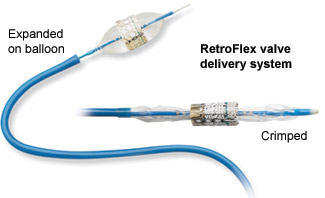
As you may know, I am high technology consultant specializing in electronics manufacturing. That said, I spend my workdays examining the manufacturing technologies and processes for many different types of electronic products. My clients are in all areas of technology – computing, industrial, consumer, wireless and medical.
One technology category that I am always learning more about is (as you might guessed) heart valve replacement technology for the aortic, mitral, tricuspid and pulmonary valves. Recently, I went on a great manufacturing tour at Edwards Lifesciences in Irvine, California.
After Aortic And Mitral Valve Surgery, Charles Revs Up The Motorhome
By Adam Pick on August 29, 2008
When I wake up in the morning, there is nothing better than opening an email like this… 🙂
Hello Adam,
As I am now in my 14th week since having heart surgery, I look back at my recovery with much appreciation. I was hospitalized in September, 2007 for shortness of breath and coughing up small amounts of blood. At that time, I was treated for congestive heart failure. My heart went back into rhythm and I was released.
Since I had a sixty-year history of heart rhythm problems, I was concerned. My cardiologist told me that it was not that bad and that I would someday just “die in my sleep”. That was not very comforting to hear.

Lil’ Sammy Gets Functional, Not Structural, Heart Murmur Diagnosis!!!
By Adam Pick on August 29, 2008
It’s never easy talking to parents about their children with heart murmurs.
The discussion is even more challenging when I have a life-long relationship with the parents. (As I previously shared, my nephew (Buddy) was diagnosed with a small heart murmur earlier this summer.)
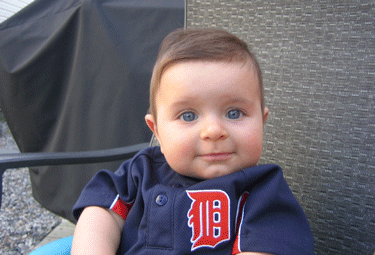
Recently, my best best friend, Rob, discovered that his six-month old son, Sammy, had a murmur as well. As you would imagine, this was a very challenging time for Rob and Stephanie (his wife).
Well… Today, there is great news to share about Lil’ Sammy. Last week, Sammy had an echocardiogram. After the echocardiogram, the cardiologist realized that Sammy’s murmur was functional in nature. That means there were no structural issues with his heart valves and there was no evidence of a congenital condition (e.g. bicuspid aortic valve disorder).
Like many newborns with heart murmurs, the cardiologist told Rob and Steph that Sammy’s murmur would most likely “go-away” as Sammy (and his heart) continues to grow and develop.
Keep on tickin’ Sammy!
Adam
“Is Mitral Valve Prolapse Fatal?” Asks Herbert
By Adam Pick on August 29, 2008
Herbert, from the Philippines, just emailed me about his recent diagnosis of mitral valve prolapse. As you can read below, Herbert is questioning whether or not mitral valve prolapse is fatal.
Herbert writes, “Hi Adam! I am Herbert Ares, a pastor from the Philippines. I am 42 years old, married, with an eight year old son. Two weeks ago, I was diagnosed with mitral valve prolapse. I have headaches from the mitral valve prolapse – about three to five times in a day. I’m also having other symptoms including chest pains, shortness of breath, panic and a strange feeling like I am going to die. The doctor prescribed Therabloc-Atenolol. The drug is really helping with the attacks. I’m concerned about going through mitral valve replacement due to the costs of the surgery. Is there any other way to cure mitral valve regurgitation? My doctor said MVP is non-fatal. Is it true?”
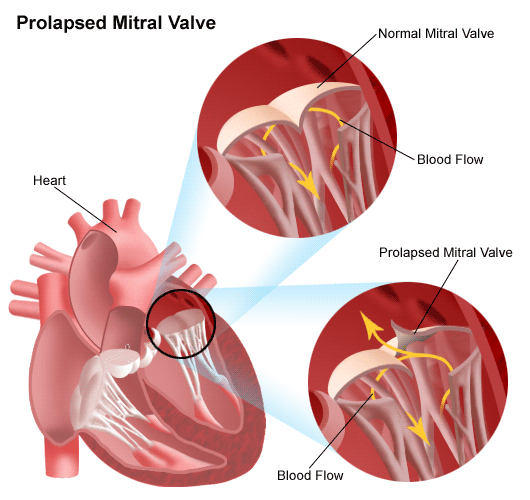
Can Lynn Use Her Water Pik After Heart Surgery?
By Adam Pick on August 29, 2008
I love a great teeth cleaning. You can ask Robyn (my wife)… She thinks I’m addicted to dental floss. That said, I was very interested to receive this question from Lynn.
Lynn writes, “I recently had open heart surgery to replace my mitral valve with a bovine valve. My cardiologist told me I could never use a water pik again. My dentist and I want to continue. What is the problem? Am I getting good advise from my cardiologist?”
Hmmmmm…. I have never received a question about water piks before. That said, I did not have a quick answer for Lynn so I did some quick Internet research. Unfortunately, I did not find anything of tremendous value besides a comment by Dr. Teig about water piks and mitral valve prolapse. (To learn more about prolapsed mitral valve, click here.)
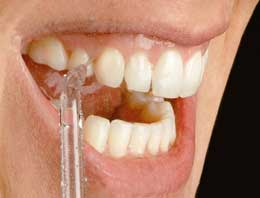
Clogged Aortic Valve? Can You Help My Mom?
By Adam Pick on August 29, 2008
Jamie just asked me, “Adam – My mom has been diagnosed with aortic regurgitation. The cardiologist told her that her aortic valve is clogged. As a result of the clog, she is being scheduled for more tests and a potential valve repair or replacement. Does this sound right?”
Hmmmm. I think there may be a mix-up of medical terms your mom’s condition. First, aortic regurgitation can lead to heart valve repair or heart valve replacement. That makes sense. Now, as for the source of that regurgitation, I don’t believe it is because the aortic valve is “clogged”. It sounds like the flaps of your mom’s aortic valve are floppy – thereby creating a blood leak back into the heart.
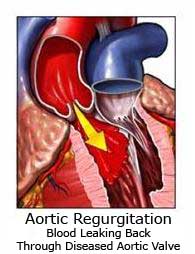
“Can Heart Valves Be Repaired?” Asks Linda
Written By: Adam Pick, Patient Advocate, Author & Website Founder
Page Last Updated: June 7, 2025
When I was diagnosed with severe heart valve disease, I was unfortunately not a candidate for a heart valve repair procedure. My bicuspid aortic valve was diagnosed with severe stenosis and regurgitation. For that reason, both my first and second-opinion cardiologists suggested an aortic valve replacement.
That said, I often receive questions from a patients about this topic. Recently, Linda asked me, “Can heart valves be repaired or are they always replaced?” and “Are there different types of heart valve repair?”
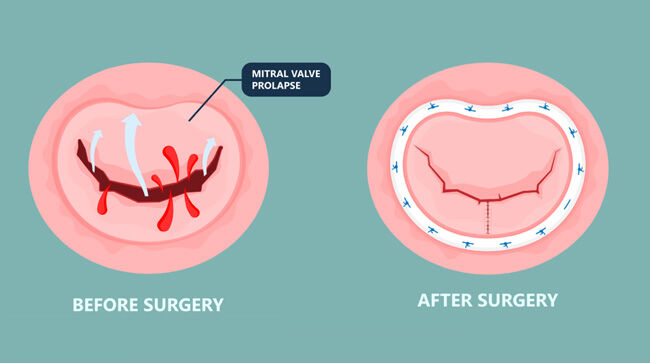
Mitral Valve Repair
As you can see above, the answer to Linda’s first question is “yes” – a diseased heart valve can be repaired. In fact, some recent studies suggest that heart valve repair may provide a better long-term solution than heart valve replacement.
As for the answer to Linda’s second question, there are different kinds of heart valve repair. According to the Texas Heart Institute, here are the different types of valve repair:
- Commissurotomy, which is used for narrowed valves, where the leaflets are thickened and perhaps stuck together. The surgeon opens the valve by cutting the points where the leaflets meet.
- Valvuloplasty, which strengthens the leaflets to provide more support and to let the valve close tightly. This support comes from a ring-like device that surgeons attach around the outside of the valve opening.
- Reshaping, where the surgeon cuts out a section of a leaflet. Once the leaflet is sewn back together, the valve can close properly.
- Decalcification, which removes calcium buildup from the leaflets. Once the calcium is removed, the leaflets can close properly.
- Repair of structural support, which replaces or shortens the cords that give the valves support (these cords are called the chordae tendineae and the papillary muscles). When the cords are the right length, the valve can close properly.
- Patching, where the surgeon covers holes or tears in the leaflets with a tissue patch.
Interestingly, in addition to mitral valve repair procedures, there are newer techniques that are now repairing diseased aortic valves as well.
Related Links:
- Mitral Valve Repair Surgery: What Should Patients Know?
- Different Approaches for Repairing the Mitral Valve
- Surgeon Q&A: Aortic Valve Repair
I hope that helps explain that heart valves can be repaired through a number of different approaches.
Keep on tickin!
Adam
Mechanical Or Bioprosthetic Heart Valve Replacements?
By Adam Pick on August 29, 2008
Earlier today, Helia wrote to me, “Adam – I have been diagnosed with severe aortic valve stenosis. My cardiologist recommends surgery within the next two months. I’m confused by everything right now. Especially, I’m confused by all the different types of valve options. Which is better for me – a mechanical or bioprosthetic heart valve replacement?”
I really feel for Helia. In fact, I feel for all patients that are going through the very, very, very, very awkward and fearful experience of being diagnosed with heart valve disease. As I remember, it’s not fun. Still, I’m not going to wallow in the negative because I know that heart valve surgery is a medical miracle for most patients that need valve repair or valve replacement.
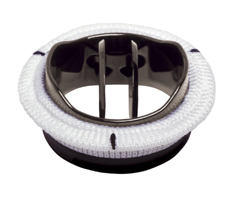
On-X’s Mechanical Heart Valve
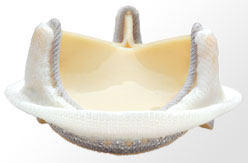
As for Helia’s question of, “Should I get a mechanical or bioprosthetic heart valve replacement?”, that is a great question. As you would imagine, selecting a heart valve replacement – mechanical or bioprosthetic – is not unlike selecting anything else (a car, a home, a new computer, or even a spouse). There are trade-offs, or pros and cons, for both mechanical heart valves and bioprosthetic heart valves (including pig valve replacements or cow valve replacements).
“On-X For Mitral Heart Valve Replacement?” Asks Vivian
Written By: Adam Pick, Patient Advocate, Author & Website Founder
Page Last Updated: May 12, 2025
Vivan has a severe mitral regurgitation and is preparing for mitral valve replacement operation. She is currently considering several different valve types including tissue valves and mechanical valve. Vivian’s question to me is, “Adam – Can you tell me about the On-X valve for mitral valve replacement?”

Take A Guess: How Many Mitral Valve Surgeries Per Year In The United States?
Written By: Adam Pick, Patient Advocate, Author & Website Founder
Page Last Updated: May 29, 2025
Ready to take a guess?
Here’s the question:
How many mitral valve surgeries, including valve repair and valve replacement, are performed each year in the United States?
Any ideas?
If you need help, here is a hint… Each year, there are over 100,000 heart valve surgeries performed in the United States alone. (I know that wasn’t the greatest hint but I hope it helped you a little bit.)
For the answer, scroll down below the picture of a diseased mitral valve with calcified valve flaps.
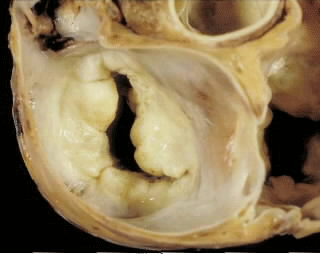
Samantha Asks, “Will My Mom’s Heart Stop During Valve Replacement Surgery?”
Written By: Adam Pick, Patient Advocate, Author & Website Founder
Page Last Updated: May 9, 2025
In an email, Samantha writes, “Hi Adam – I’m freaking out right now. My mother was just told that she will need open heart surgery to replace her mitral valve. I am on ‘information overload’ as I’m surfing the Internet like crazy. I’m trying to better understand the surgical process. Is it true that the heart is stopped during a valve replacement operation? If so, how do they stop the heart?”
Thanks for writing Samantha. I had this exact question as I was getting ready for my aortic valve replacement surgery.
The answer to your first question is “Yes, most likely, your mother’s heart will be stopped during her surgical mitral valve replacement.” However, you should know that there are a number of heart surgery procedures in which the heart does not necessarily have to stop beating.
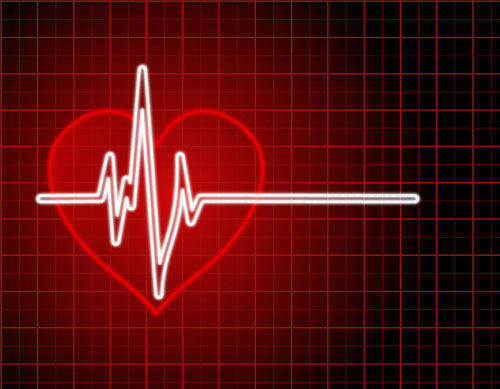
Ken’s Cardiac Catheterization Procedure – Insurance, Fear, Pain, Going Home
Written By: Adam Pick, Patient Advocate, Author & Website Founder
Page Last Updated: June 5, 2025
Considering that a cardiac catheterization is on Time Magazine’s “Top 10 Scary Medical Procedures”, I am always looking for good patient information to dispel the fear associated with this procedure. (FYI, many heart valve surgery patients have a cardiac catheterization prior to valve repair and valve replacement operations.)
On that note, Ken just sent me a very detailed account of his recent cardiac catheterization. So you know, Ken has severe mitral regurgitation and is scheduled for surgery later this month. As you can read below, he has some interesting points specific to insurance, fear, the procedure and going home afterwards.
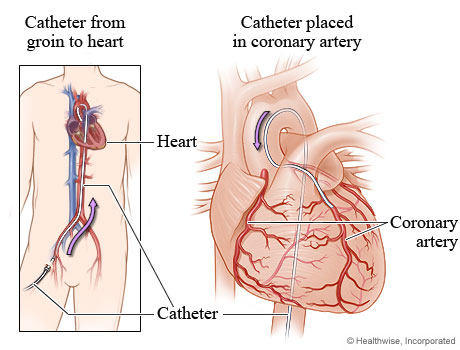
Without further ado, here are Ken’s thoughts specific to his recent cardiac catheterization:
Insurance Considerations For The Cardiac Catheterization
I am enrolled in an HMO and therefore needed referrals from my primary care physician for the cardiologist and the hospital. Since my cardiologist was performing the procedure at Massachusetts General Hospital, I also needed a referral for the admitting cardiologist there as well.
“Does Anyone Have Migraine Headaches & Mitral Valve Prolapse?” Asks Brenda
Written By: Adam Pick, Patient Advocate, Author & Website Founder
Page Last Updated: May 29, 2025
Brenda just emailed me an interesting question about mitral valve prolapse and headaches. She writes, “Adam – I was diagnosed with prolapsed mitral valve over ten years ago. However, I have been completely asymptomatic since then. Recently, I have had really bad headaches… They might even be migraine headaches. Do you know if that is a symptom of mitral valve prolapse?”

This question raises two interesting points specific to heart valve disease.
- First, patients can be completely asymptomatic – meaning they do not have any of the documented symptoms of heart valve disease. I fell into this category of patients. Out of all the documented symptoms of leaking heart valves, I only really had one small symptom that forced me to see my cardiologist. To learn more about the symptoms, click here.
- Second, symptoms manifest differently for each patient case. There is no “one-size-fits-all” symptom-set that triggers the diagnosis of disorders including aortic stenosis or mitral regurgitation defects, etc.
Back to Brenda’s question… I just reviewed the symptoms of mitral valve prolapse. According to the Mayo Clinic and Cleveland Clinic, headaches are not common for mitral valve prolapse. However, after reviewing the symptoms listed at Medicine Net, migraine headaches are on their list of symptoms for MVP.
Given that variance in commonly identified symptoms, I would encourage you to see your cardiologist and get checked out. If, by chance, your mitral valve prolapse is triggering your headaches, it would be better to know sooner than later. I hope this helps.
Related Links:
- Jim’s Story: From Ocular Migraines to Mitral Valve Repair Surgery
- Vertigo, Headaches and Vision Problems After Heart Valve Surgery
Keep on tickin!
Adam
Open Heart Surgery Scars For Women: Jenny’s Picture Request
Written By: Adam Pick, Patient Advocate, Author & Website Founder
Page Last Updated: June 8, 2025
Jenny must be tired of seeing my scar sprinkled throughout this website. She asks, “Adam – Do you have any pictures of incision scars for women who have had open heart surgery? I’m getting ready for open heart surgery and would like to see what my chest scar might look like.”
Well, I do have two pictures of women which show an open heart surgery scar at different stages of the recovery. The picture below shows a woman still in the hospital (shortly after surgery).
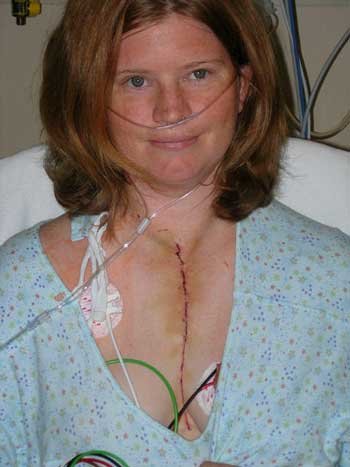
The next picture shows a lady who appears to be fully recovered. You need to look real close to see the incision scar which is no longer red (as shown above) but white. Yes, this picture is a little artsy but it does a good job showing just how well the skin can heal.
Iraqi President, Jalal Talabani, Has Heart Valve Surgery At Mayo Clinic
By Adam Pick on August 15, 2008
The list of political figures having heart valve surgery continues to grow. In addition to Governor Arnold Schwarzenegger and former Senator Jessie Helms, I just learned that Iraqi President, Jalal Talabani, was discharged Thursday from the Mayo Clinic after undergoing successful surgery on a heart valve.
The statement by the presidential press office said Jalal Talabani initially went to the hospital in Rochester, Minnesota, on August 2nd for knee surgery but that “the medical team found out that he suffers from a problem in one of the heart valves.”
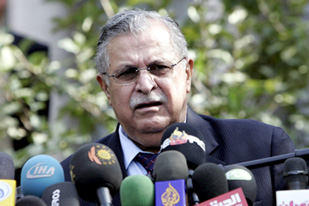
“This has required surgery and it has been done with success,” the statement said. It said the president left the Mayo Clinic on Thursday morning and was “in good health.”
The 74-year-old Jalal Talabani collapsed and was hospitalized in Jordan and the United States in February 2007 after suffering from what aides called exhaustion and dehydration caused by lung and sinus infections. Mahmoud Othman, a prominent Kurdish lawmaker who is close to the Kurdish Jalal Talabani, said the Iraqi president would receive treatment for his knee at a later date.
Mayo Clinic spokesman Bryan Anderson said that at Talabani’s request, the clinic had no comment.
Keep on tickin’ President Talabani!
Adam
Bras And Breast Support After Open Heart Surgery… Can You Help Vicki? (Updated)
Written By: Adam Pick, Patient Advocate, Author & Website Founder
Page Last Updated: June 8, 2025
Don’t let the title of this blog fool you. There is no weird, sexy, fetish thing going on here. 🙂
Instead… With this post, I am asking for HELP from the female, heart surgery patients that regularly read this blog.

Specifically, Vicki is preparing for open heart surgery in three days. She just emailed me an urgent question about the use of bras after cardiac surgery. I have some thoughts on the topic (even though I don’t have breasts). But, I imagine a few of our female patients – that means you Becca, Joanne, Heather – might have some interesting advice for Vicki. That said, can you help her?
Golfing, Heart Surgery And Dennis’ Hole-In-One
Written By: Adam Pick, Patient Advocate, Author & Website Founder
Page Last Updated: June 9, 2025
I stunk at golf before heart surgery. Really, in thinking about it, that might be an understatement. Now, it is several years after my open heart surgery.
Guess what?
I still stink at golf!
But, that is not the point I’m trying to make. Here’s the point… Many patients head into heart surgery in a world of uncertainty with questions like “Can I do this activity post-surgery?” or “Will I be able to do that after surgery?”
All of these doubts are completely rational. I did the exact same thing when I was rolled in for my aortic valve replacement operation. But, I’m here to tell you, after a double heart valve replacement, that you can fully recover and you can restore your body to re-achieve whatever you set your mind too.
